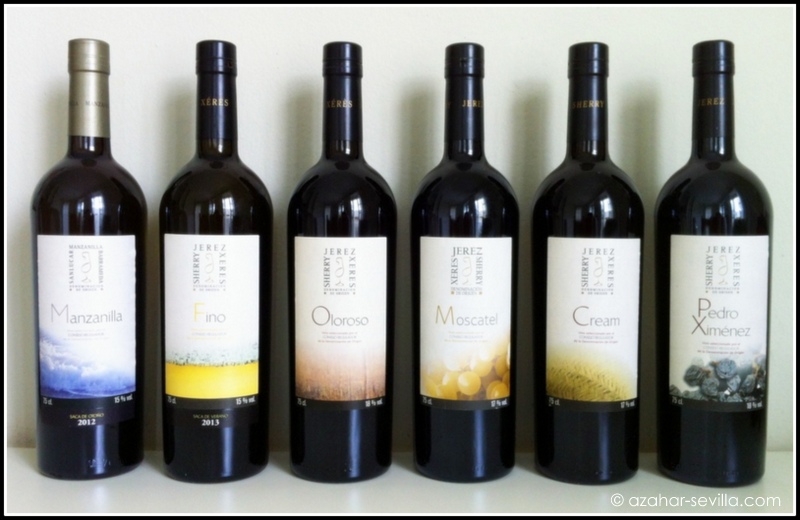Although there may be other “sherry style” wines, true sherries are those wines, and only those wines, produced in the area around Jerez de la Frontera in southwest Spain, or more specifically, those wines aged in the towns of Jerez, Puerto de Santa Maria, and Sanlúcar de Barrameda under the rules of the Consejo Regulador for the “Denominaciones de Origen” of Jerez and Manzanilla.

We meet a lot of people who associate sherry with that sweet, dark liquid produced for Christmas gatherings by grandmothers and maiden aunts, but there’s a whole world of sherries beyond this, and its aficionados consider it as possibly the world’s most fascinating and underrated wine. So what’s so special about sherry?
Sherries come in a range of styles from light super-dry wines to dense, dark sweet ones. Historically, England has a long connection with sherry (they were highly praised by Shakespeare); English names like Harvey’s and Humbert & Williams feature among the bodegas of Jerez, and the English have been a major consumer of cream sherries in particular. But although there are some excellent wines right across the spectrum, the upsurge of interest in recent years has been in the dry sherries in particular.

Dry sherries come in two basic styles – those that are biologically aged under a layer of yeast (called flor), and those that are aged oxidatively, or in contact with the air. The former are either Manzanillas (from Sanlucar), or Finos (from Jerez and El Puerto), and the latter are Olorosos (there are some additional twists to the story, but more of that later). All dry sherries are made from the Palomino Fino grape variety (Manzanillas and Finos generally from the first pressing to make a lighter wine, Olorosos from the second for a fuller body; the third pressing is used for grape spirit and vinegar), are fortified (have grape spirit added to increase the level of alcohol), and are aged in a system called a solera.

The wine coming out of fermentation is generally around 12%. It is then raised to an alcohol level of around 15-16%, which helps a vigorous growth of yeast to cover and shield the wine from the air while the yeast consumes the sugars in it (biological aging). Olorosos are fortified to even higher levels, about 17-18%, to prevent the yeast from growing (oxidative aging).
Two of the most highly prized dry sherries are amontillado and palo cortado. Amontillados are initially aged like finos, but after about 3 years extra alcohol is added to kill the yeast, and the sherry is thereafter aged oxidatively, creating a complex and versatile wine. Palo Cortados also start life as finos, but the yeast dies or is killed very early on to create what is, in effect, an oloroso made from the lighter first pressing.

At the other end of the spectrum are the sweet sherries. These are made from the sweeter Pedro Ximenez and Muscat grapes. Good sweet sherries are dark, smooth and rich, often with a flavour of raisins, as the grapes are partially sun-dried before pressing to concentrate the sugar.
Cream sherries are a blend of dry sherry (usually oloroso, but fino based cream sherries are also possible) with sweet wines, either moscatel or PX, and are the style that used to be the most popular in Britain, with something of a boom in the 60s and 70s, when brand names like Harvey’s Bristol Cream and Croft Original were in vogue.

If you’re coming to Spain and have never had sherry this is the time to learn something about this complex and enigmatic wine, and to discover why so many of those involved with sherry get so passionate about it. To have a personalised sherry experience we recommend the Introduction to Sherry tour (with tapas!) offered by Official Sherry Educator Shawn Hennessey of Azahar Sevilla, and featured in Telegraph Travel as one of the Top 10 Food and Drink Holidays in Spain.
photos courtesy of Azahar Sevilla